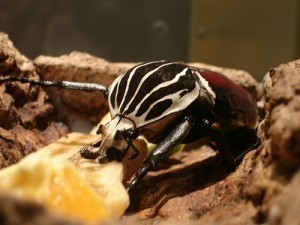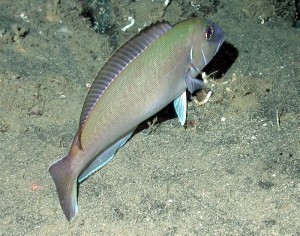Biggest Bugs
The word “insect” is commonly used to describe something small, but perhaps one should reconsider the usage of the term. While insects are indeed characterized by their small size, certain species of bugs can grow much bigger than most realize.
Native to Africa, Goliathus regius, the Goliath beetle, gets its name from the biblical giant, and rightfully so. Perhaps the best known among the biggest bugs in the world, the males of the species mature to a length of 2.4 to 4.3 inches (60 to110 millimeters), while the females can grow up to 2.0 to 3.1 in (50 to 80 mm) long. During the larval stage, Goliath beetle larvae can grow to a length of 9.8 in (250 mm) and weigh from 80 to 100 grams (2.8 to 3.5 ounces). Adult Goliathus, however, only weigh around half of their larva’s mass, though they nonetheless hold the record for being the world’s heaviest insect.
Found exclusively in New Zealand, the Weta is an insect species whose physical appearance resembles that of a cricket or a grasshopper. But unlike those two insects, weta are mostly wingless, and they can also be distinguished by their usually spiny and enlarged hind legs. There are around 70 species of weta in New Zealand, one of which is the Giant Weta of the genus Deinacrida (a Greek word meaning “terrible grasshopper”).

Appropriately enough, the Giant Weta can reach a length of 4 in (100 mm), excluding their legs and their antennae, and can weigh around 20 to 30 g. There are, in turn, 11 Giant Weta species in all, including the Wetapunga or the Little Barrier Island weta, considered as the largest Giant Weta species. Another species, Deinacrida heteracantha, broke records as one of the world’s heaviest insects, when one that was filled with eggs achieved a weight of 70 g.
Moving on to winged insects, the very rare Ornithoptera alexandrae, Queen Alexandra’s Birdwing, is considered as the biggest butterfly in the world. Located only in the tropical forests of Papua New Guinea, the females of the species are larger, reaching a 3.2 in (8 centimeters) body length, a weight of 12 g (0.42 oz) and a wingspan of 12 in (31 cm). Meanwhile, the smaller males have an approximate wingspan of 20 cm, but most commonly around 16 cm.
Another large winged insect is Attacus atlas, the Atlas moth, a tropical species which lives in Southeast Asia. The world’s largest moths, they range in wingspan from 10 to 12 in (25 to 30 cm). Like Queen’s Alexandra’s Birdwing, the female Atlas moth is bigger and heavier than the male. The biggest recorded Atlas moth was found in Java, measuring 262 mm.





